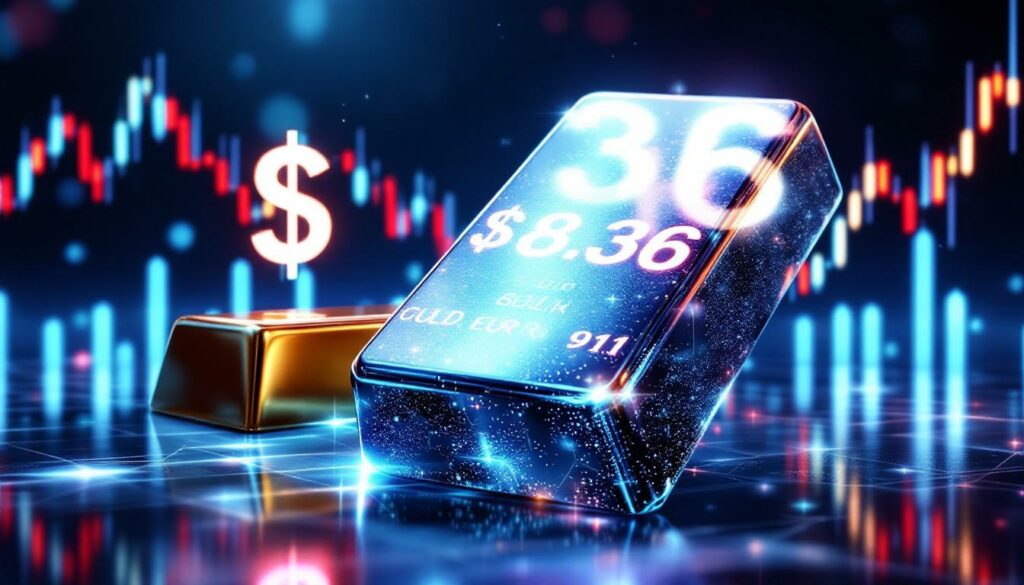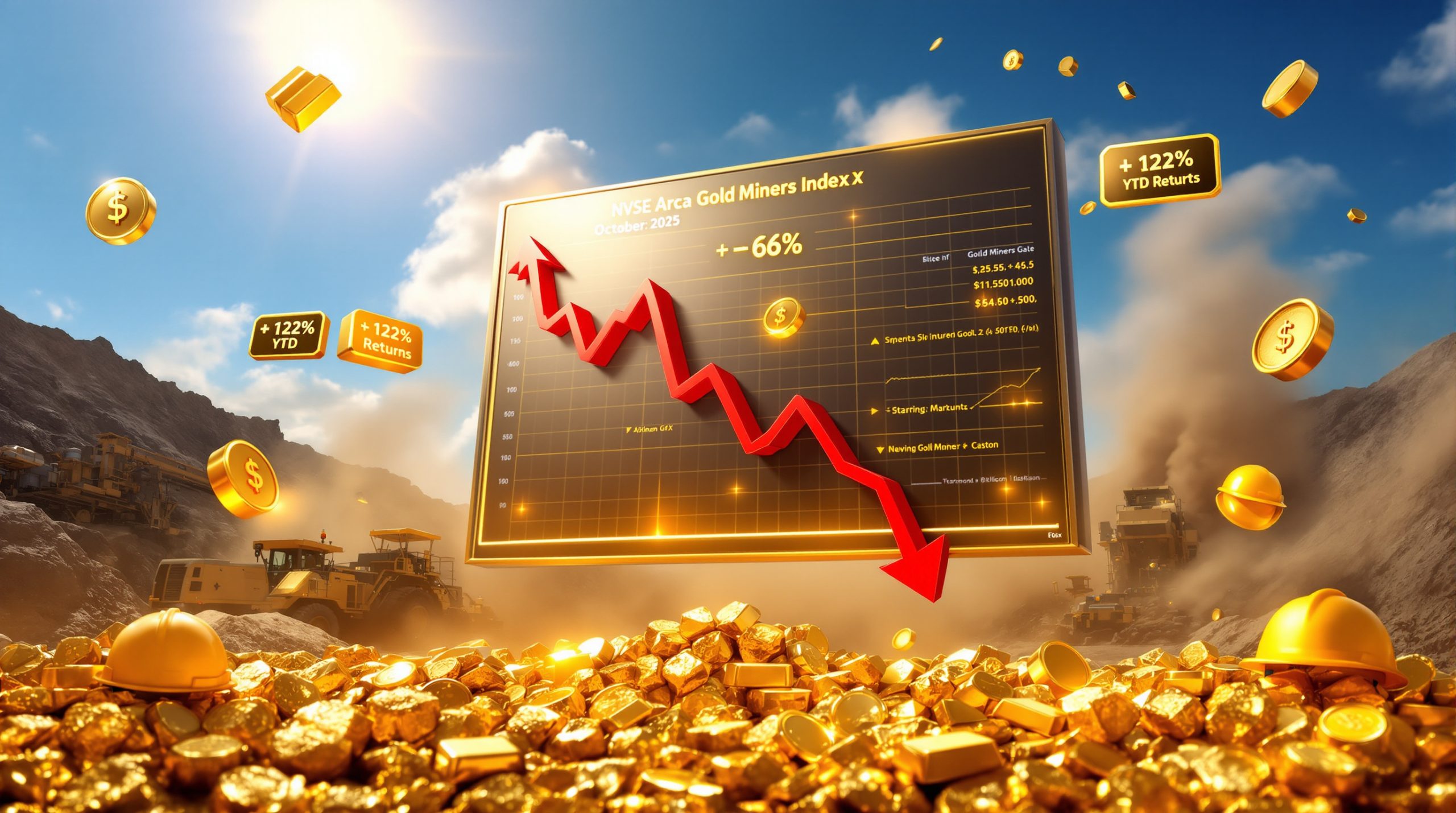Silver Market Shows Exceptional Growth in June 2025
June 2025 proved to be an exceptional month for silver, with the precious metal recording significant price gains and outperforming gold by a substantial margin. This analysis examines silver's recent performance, explores the driving factors behind its strong showing, and considers what investors might expect for the remainder of the year.
Silver's Impressive June Performance
Silver demonstrated remarkable strength in June 2025, recording an impressive 8.8% price increase for the month. This strong upward movement brought silver prices to just under $36 per troy ounce by month-end, significantly outpacing gold's more modest 0.3% gain during the same period.
The precious metal's outperformance caused the gold-to-silver ratio to decrease from 99 to 91, indicating silver's relative strength compared to gold in the current market environment. As noted by Jordan Eliseo and Luke Tyler from ABC Bullion in their June 2025 Monthly Market Update: "Silver performed far more strongly, increasing by 8.8% for the month, ending June trading just below USD $36oz."
While USD-denominated returns were impressive, performance in Australian dollar terms was more moderate due to the strengthening AUD, which gained 1.8% against the USD in June, ending the month at 0.655.
Key Silver Price Movements in June
- Monthly gain: +8.8% in USD terms
- Closing price: Just below $36 per troy ounce
- Gold-to-silver ratio: Decreased from 99 to 91
- AUD performance: More moderate gains due to Australian dollar strength
Silver vs. Gold Performance Comparison
| Metal | June 2025 Performance (USD) | YTD 2025 Performance | FY 2024-25 Performance |
|---|---|---|---|
| Silver | +8.8% | +14.4% | +22% |
| Gold | +0.3% | +25.5% | +41% |
What Drove Silver's Strong Performance in June?
Market Fundamentals Powering Silver's Rise
Silver's impressive June performance was driven by a convergence of economic, monetary, and geopolitical factors that collectively strengthened investor interest in precious metals. The month saw a particularly favorable environment for silver, which often exhibits higher volatility than gold during bull markets.
As explained in ABC Bullion's June 2025 Monthly Market Update: "The exceptional returns for gold and silver were driven by a range of factors, including strong central bank buying, a return to monetary easing by the US Federal Reserve, heightened geopolitical risk, and renewed volatility in equity markets driven by excessive valuations, and concerns over tariff impacts on silver and trade policy in the aftermath of the US Presidential Election."
Monetary Policy Influence
The U.S. Federal Reserve maintained its interest rate at 4.25%-4.5% during its June meeting, continuing its cautious approach amid mixed economic signals. The central bank's easing cycle, which began earlier in the year, has created a supportive environment for precious metals, with silver typically responding strongly to monetary stimulus.
Lower interest rates reduce the opportunity cost of holding non-yielding assets like precious metals, making them more attractive to investors seeking portfolio diversification and inflation protection.
Geopolitical Tensions
Heightened global uncertainties following the U.S. Presidential Election contributed to increased safe-haven demand. Concerns over potential trade policy shifts and tariff implementations created market volatility that benefited precious metals as portfolio hedges.
These geopolitical factors have historically favored precious metals analysis, particularly during periods of uncertainty around global trade and economic policy.
Technical Factors
Silver's price movement pushed it significantly above key technical indicators, suggesting strong momentum in the market. The declining gold-to-silver ratio indicates increasing investor preference for silver relative to gold, often seen during strong precious metals bull markets.
How Has Silver Performed in 2025 So Far?
Year-to-Date and Financial Year Performance
Silver has demonstrated remarkable strength throughout the first half of 2025, though slightly trailing gold in percentage terms. According to the Silver Price History, the year-to-date performance shows silver has gained 14.4% in USD terms (10.5% in AUD terms) through June, while the full financial year 2024-25 saw silver performance in June rise by 22% in USD terms (24% in AUD terms).
The difference between USD and AUD returns highlights the impact of currency movements on precious metals performance for Australian investors. The strengthening Australian dollar during portions of 2025 has somewhat tempered gains when measured in AUD terms.
Silver's Performance Across Multiple Currencies
Silver's performance has varied significantly across different currencies, reflecting the complex interplay between precious metal prices and currency movements:
| Currency | YTD 2025 Performance | 5-Year Average Annual Return |
|---|---|---|
| USD | +14.4% | +15.4% |
| AUD | +10.5% | +15.8% |
| EUR | +5.6% | +14.2% |
| JPY | +4.9% | +22.4% |
| CNY | +12.9% | +15.8% |
Historical Context for Silver's Current Performance
When examining silver's longer-term performance metrics:
- 5-year average annual return: 15.4% (USD)
- 10-year average annual return: 8.0% (USD)
- 20-year average annual return: 8.4% (USD)
- Since 1999 average annual return: 8.6% (USD)
These figures demonstrate silver's long-term potential as both an industrial metal and investment asset, with recent performance tracking above its long-term averages.
How Does Silver Compare to Other Assets in 2025?
Silver vs. Broader Market Performance
While precious metals have generally outperformed traditional financial markets in 2025, silver's position relative to other assets provides important context for investors. The first half of 2025 has seen precious metals significantly outpace equity markets, with the S&P 500 returning just 5.5% compared to silver's 14.4% gain in USD terms.
According to ABC Bullion's June 2025 Monthly Market Update: "Calendar year to date and rolling 12 month returns for gold continue to dwarf the S&P 500, with gold +26% in the first 6 months of the year vs +5.5% for equities." While this statement specifically references gold, silver has followed a similar pattern of outperforming equities, albeit to a lesser degree than gold.
Silver vs. Platinum and Other Commodities
Platinum recorded an extraordinary monthly gain of 26% in June 2025, rising from USD $1,071 to USD $1,350 per ounce. This remarkable performance eclipsed even silver's strong showing, causing the gold-to-platinum ratio to decline from nearly 3.50 to below 3 by month-end.
The performance disparity between precious metals (platinum, silver, gold) and other commodities has been significant in 2025, highlighting the unique drivers affecting precious metals markets.
Silver in the Broader Commodity Context
The Gold/Bloomberg Commodities Index (BCOM) ratio remained near all-time highs at 32.22 by the end of June, more than four times its long-term average of 6.99. This suggests precious metals are significantly outperforming the broader commodities complex, with silver participating in this trend while exhibiting its characteristic higher volatility.
Similarly, the Gold/Oil ratio ended June at 50.49, nearly triple its long-term average of 18.75, further demonstrating precious metals' outperformance relative to energy commodities.
What Are Silver's Technical Indicators Showing?
Technical Analysis and Price Patterns
Silver's technical picture shows strong momentum with prices trading well above key moving averages. While the ABC Bullion report doesn't provide specific technical data for silver, we can infer from gold's technical indicators that silver likely exhibits similar, if not more pronounced, technical strength given its higher beta to gold.
Gold was trading approximately 13% above its 200-day moving average at the end of June, down from a peak gap of 25% in April. Given silver's higher volatility, it's reasonable to expect that silver's deviation from its moving averages may be even more pronounced.
Key Technical Indicators for Silver
- Price relative to moving averages: Trading significantly above 200-day moving average
- Momentum indicators: Showing strong positive momentum
- Relative strength: Outperforming gold on a relative basis
- Volatility measures: Increased volatility compared to previous months
Technical Support and Resistance Levels
Silver faces potential resistance near the psychological $40 level, while support has formed around the $32-33 range based on recent price consolidation patterns. The technical structure suggests continued strength with potential for short-term consolidation given the rapid price appreciation.
What's Driving Investment Flows into Silver?
Institutional and Retail Investment Trends
Investment flows into silver have been robust, with ETF holdings showing significant increases. While gold ETFs saw approximately 70 tonnes of inflows in June (bringing year-to-date inflows to nearly 400 tonnes), as noted in ABC Bullion's June 2025 Monthly Market Update, silver ETFs have also experienced substantial demand, particularly from North American and European investors.
According to the report: "Data for June suggests just over 70 tonnes of gold was bought by ETF investors across the course of the month." While specific silver ETF data isn't provided, precious metals ETFs generally move in tandem, with silver often showing more pronounced percentage movements due to its smaller market size.
Speculative Positioning in Silver Markets
Futures market positioning for precious metals remains relatively modest compared to price performance, suggesting the rally is not primarily driven by speculative excess. This relatively restrained positioning indicates potential for further upside as more investors enter the market.
Central Bank Influence on Precious Metals
While central banks primarily focus on gold rather than silver for reserve diversification, their continued strong gold purchases indirectly support the entire precious metals complex. Survey data from the World Gold Council indicates 43% of central banks plan to increase gold holdings in the coming year, with 95% believing overall central bank gold holdings will rise.
This ongoing central bank demand provides important structural support for the precious metals complex, including silver, even though central banks rarely purchase silver directly.
What's the Outlook for Silver for the Rest of 2025?
Market Factors to Watch
Several key factors will likely influence silver's performance through the remainder of 2025:
Monetary Policy Trajectory
The Federal Reserve's interest rate decisions will remain crucial, with market expectations for further rate cuts potentially supporting precious metals. However, uncertainty around the timing of these cuts could create short-term volatility.
Inflation Concerns
While inflation has moderated from 2022 peaks, it remains above the Fed's 2% target (CPI at 2.4% as of May 2025). With the Fed in easing mode, the USD weakening, and potential tariff impacts, inflation could rise again, typically benefiting silver prices.
As noted in ABC Bullion's June 2025 Monthly Market Update: "With the Fed in easing mode, the USD down and the impact of tariffs yet to be fully felt across the economy, there is a chance inflation rises from here, which would likely support gold demand and gold prices." This principle applies equally, if not more strongly, to silver given its historical responsiveness to inflation expectations.
Economic Growth Outlook
Projections for a global economic slowdown, influenced by U.S. tariff policies, growing fiscal deficits, and changing immigration patterns, could impact industrial demand for silver while potentially enhancing its appeal as a safe-haven asset.
Potential Price Drivers for Silver
- Industrial demand: Silver's industrial applications (solar panels, electronics) provide demand support beyond investment flows
- Supply constraints: Limited new mine supply coming online in the near term
- Investment demand: Continued ETF inflows and physical buying
- Currency movements: Potential further USD weakness would support USD-denominated silver prices
How Does Silver Compare Historically to Gold?
Gold-to-Silver Ratio Analysis
The gold-to-silver ratio (GSR) ended June at 91, having fallen from 99 at the beginning of the month. This ratio measures how many ounces of silver it takes to purchase one ounce of gold and serves as a key indicator of relative value between the two metals.
ABC Bullion's June 2025 Monthly Market Update shows a chart of the GSR over time, with the current ratio of 91 still above the long-term historical median of approximately 60-65, suggesting silver may still be undervalued relative to gold from a historical perspective.
Historical Context for the Current Ratio
During previous precious metals bull markets, the ratio has often declined to 50 or lower, indicating potential for further silver outperformance if historical patterns repeat. The GSR peaked above 120 during the 2020 market crisis, representing an extreme level of silver undervaluation that has since partially corrected.
Gold-to-Silver Ratio During Economic Cycles
Historically, the GSR tends to peak during economic crises (as seen in 2020) and decline during precious metals bull markets. The current downward movement from recent highs suggests a potential longer-term trend of silver outperformance.
This cyclical pattern of the GSR provides investors with a framework for understanding silver's potential relative performance compared to gold during different market environments.
What Investment Implications Does Silver's Performance Have?
Portfolio Considerations for Investors
Silver's strong performance in June and throughout 2025 highlights several considerations for investors:
Diversification Benefits
Silver offers portfolio diversification benefits similar to gold but with different risk-return characteristics. Its higher volatility can enhance returns during precious metals bull markets but may also increase portfolio volatility.
Silver's correlation with equities tends to be lower than that of industrial commodities, making it a useful diversification tool even during market stress periods.
Industrial vs. Investment Demand
Unlike gold, silver has significant industrial applications, making it sensitive to both economic growth expectations and monetary factors. This dual nature can provide different diversification benefits compared to gold.
Approximately 50% of silver demand comes from industrial applications, including electronics, solar panels, medical devices, and water purification systems. This industrial component provides a demand floor that pure monetary metals like gold lack.
Entry Point Considerations
With silver having risen substantially in 2025, investors should consider their entry points carefully. The metal's tendency for sharp corrections even within bull markets suggests waiting for pullbacks may provide more favorable entry opportunities.
Allocation Strategies for Different Investor Types
- Long-term investors: Consider maintaining a strategic allocation to silver as part of a broader precious metals position
- Tactical investors: Look for relative value opportunities between gold and silver based on the gold–silver ratio insights
- Risk-averse investors: May prefer gold's lower volatility profile despite silver's potentially higher returns
FAQs About Silver's June Performance
What caused silver to outperform gold in June 2025?
Silver outperformed gold in June due to a combination of factors including increased industrial demand, stronger investment flows, and silver's tendency to exhibit higher beta (volatility) than gold during precious metals bull markets. The declining gold-to-silver ratio indicates increasing investor preference for silver's relative value.
As noted in ABC Bullion's June 2025 Monthly Market Update, the precious metals rally was driven by "strong central bank buying, a return to monetary easing by the US Federal Reserve, heightened geopolitical risk, and renewed volatility in equity markets," with silver capturing these drivers with greater magnitude than gold.
How does silver's performance compare to historical patterns?
Silver's strong performance in 2025 aligns with historical patterns where silver typically outperforms during the later stages of precious metals bull markets. The current gold-to-silver ratio of 91, while lower than recent peaks, remains above historical averages, suggesting potential for continued relative strength.
The chart in ABC Bullion's June 2025 Monthly Market Update shows the gold-to-silver ratio remains well above its long-term median of approximately 60-65, indicating silver may still be undervalued relative to gold from a historical perspective.
Should investors consider silver given its recent price increases?
While silver has shown strong performance, its current price relative to gold (as measured by the gold-to-silver ratio) suggests it may still offer value compared to historical norms. However, investors should be prepared for silver's characteristic volatility and consider their overall portfolio allocation strategy.
Silver's dual nature as both a precious metal and industrial commodity can provide unique portfolio benefits, particularly during periods of inflation and currency debasement. Its higher volatility profile makes it more suitable for investors with higher risk tolerance or longer time horizons.
How might changing monetary policy affect silver prices?
The Federal Reserve's current easing cycle typically creates a supportive environment for precious metals. If inflation concerns resurface as expected, this could further benefit silver prices, as the metal has historically performed well during periods of rising inflation expectations.
As noted in ABC Bullion's June 2025 Monthly Market Update: "With the Fed in easing mode, the USD down and the impact of tariffs yet to be fully felt across the economy, there is a chance inflation rises from here, which would likely support gold demand and gold prices." Silver typically exhibits even stronger responses to these monetary conditions than gold.
Further Exploration
Readers interested in learning more about precious metals market trends can also explore related educational content from
Want to Stay Ahead of the Next Major Silver Discovery?
Don't miss out on potential market-moving mineral discoveries that could drive silver prices even higher. Visit Discovery Alert's dedicated discoveries page to see how their proprietary Discovery IQ model provides instant, actionable alerts on significant ASX mineral finds before the broader market reacts.




